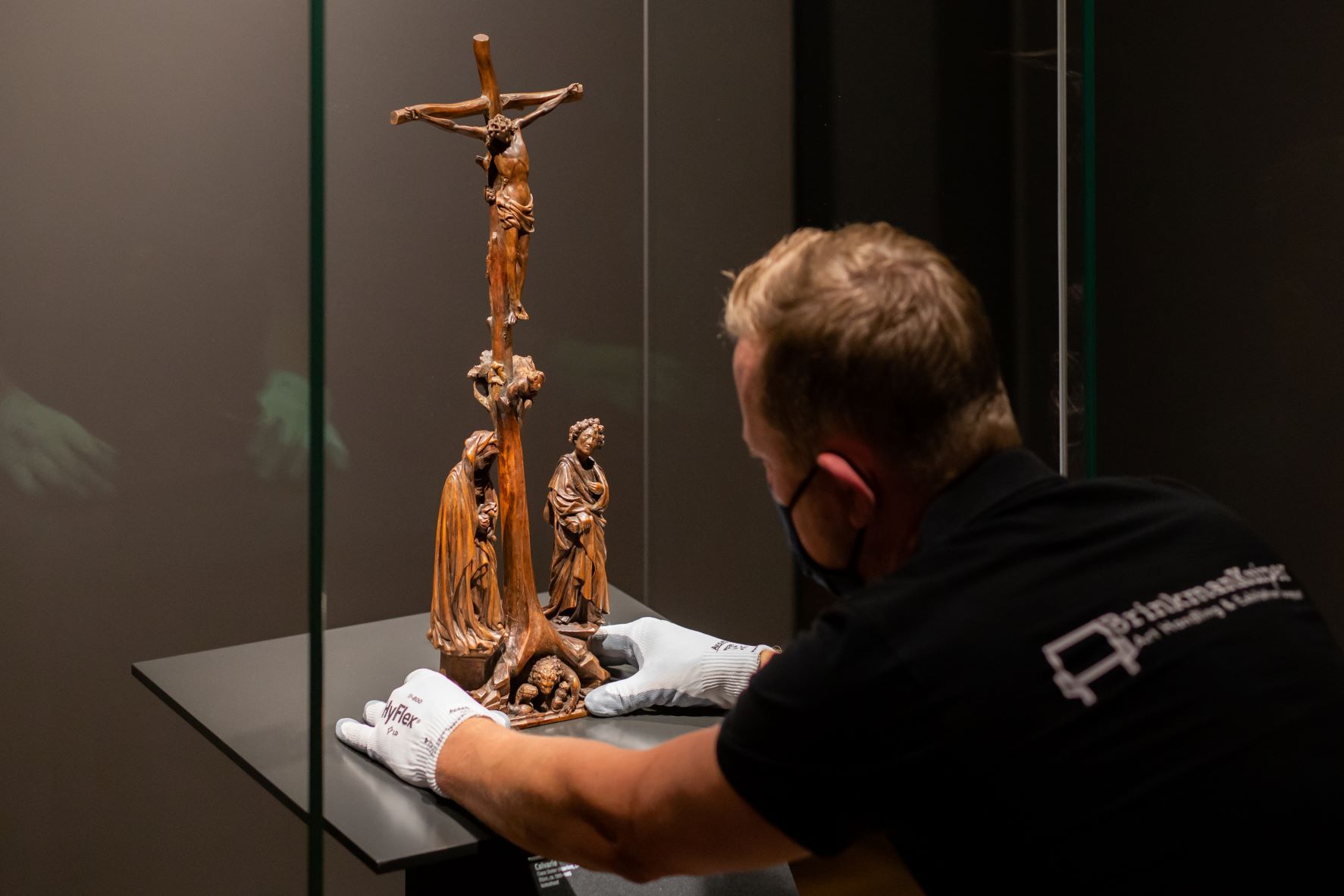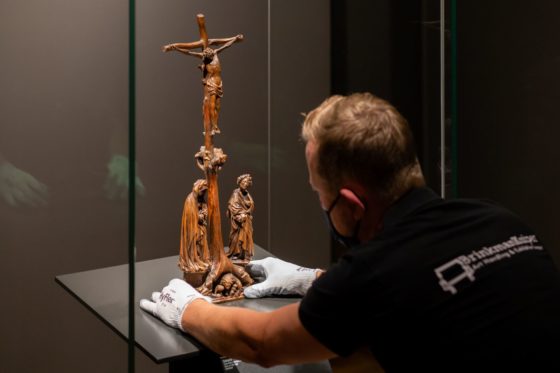Rijksmuseum attributes work to ‘father of Dutch sculpture’ Claus Sluter


The Rijksmuseum has attributed a wooden sculpture bought in March to Claus Sluter, who is considered the father of Dutch sculpture, it announced on Wednesday.
The 57cm boxwood sculpture called the Calvery depicts the crucifixion of Christ with Mary and John the Evangelist. In the hollow of the tree a lion and her four cubs are hiding, a rare medieval symbol for the resurrection of Christ.
Initially, the work was simply thought to date from the Burgundian Netherlands period (1384 -1482). Research conducted into historical and technical aspects of the work led multiple experts to conclude it could be conclusively attributed to Haarlem-born Claus Sluter, the museum said.
The sculpture, the first by Sluter to be held in a Dutch collection, was purchased for an undisclosed ‘seven figure’ amount from a dealer in Munich who advertised it as ‘from the circle of Sluter’.
However, similarities in style with three other main pieces by Sluter and the unique combination of motifs all point to Sluter himself, Rijksmuseum sculpture curator Frits Scholten told the NRC. ‘It is a most secure attribution,’ he said.
Sluter (1350-1406) was the court sculptor to Philip the Bold in Dijon, France, from 1389 to 1406. His taste for realism in sculpture was unprecedented in the Middle Ages. His depiction of human emotion and naturalistic detail mean he is considered one of the most innovative sculptors of his day.
Work by the artist rarely appears on the open market. Two small sculptures from Philip the Bold’s tomb were on offer in 1939 but because of the outbreak of the war, the Rijksmuseum did not manage to buy them.
The sculpture will be on show at the museum from August 25.
Thank you for donating to DutchNews.nl.
We could not provide the Dutch News service, and keep it free of charge, without the generous support of our readers. Your donations allow us to report on issues you tell us matter, and provide you with a summary of the most important Dutch news each day.
Make a donation